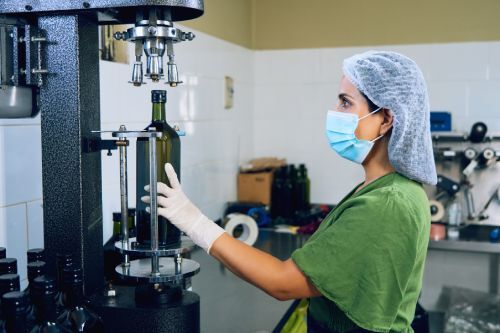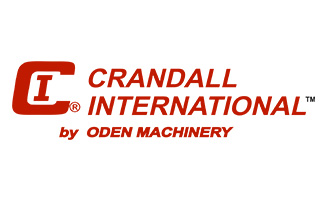 In the liquid packaging industry, precision and efficiency are of the utmost importance. Whether you’re filling bottles with water, jars with oils, or containers with cleaning agents, the machinery you choose can have a direct impact on product quality, speed, and operational costs.
In the liquid packaging industry, precision and efficiency are of the utmost importance. Whether you’re filling bottles with water, jars with oils, or containers with cleaning agents, the machinery you choose can have a direct impact on product quality, speed, and operational costs.
Gravity filling machines have long been favored for their simplicity, reliability, and adaptability. Designed to handle thin, free-flowing liquids, these machines leverage natural forces to fill containers with consistency and care.
Understanding the principles of gravity fillers—how they work, what they consist of, and where they excel—can help you make informed decisions that support both quality control and production efficiency for your liquid packaging operation.
What Is a Gravity Filler?
A gravity filler is a type of liquid filling machine that uses the force of gravity to transfer liquid from a reservoir into individual containers. It is one of the simplest and most cost-effective filling methods available and is especially effective for thin liquid products such as water, vinegar, alcohol-based solutions, and various chemicals or cosmetics.
What makes gravity fillers particularly appealing is their minimal reliance on mechanical components or external pressure systems, which not only simplifies maintenance but also reduces operational costs. This capability makes them ideal for small to mid-size production lines and businesses that prioritize efficiency, hygiene, and budget-conscious solutions.
Overall, gravity fillers provide a reliable and scalable method for ensuring consistent fill levels with gentle handling of sensitive products.
Types of Gravity Fillers: Manual vs. Semi-Automatic vs. Fully Automatic

Gravity fillers come in several types to suit different production volumes, budgets, and operational environments. Each type has unique advantages, and the right choice depends on the specific requirements of your production goals, staffing, and facility capabilities.
Manual Gravity Fillers
Manual gravity fillers are the simplest version of these machines. They often consist of a holding tank mounted above a work surface with a single nozzle or spout. Operators manually place each container and open a valve or press a lever to dispense the liquid.
These manual machines are ideal for small businesses, startups, or specialty producers handling low production volumes or testing new products.
Semi-Automatic Gravity Fillers
Semi-automatic systems introduce greater efficiency while still requiring some manual involvement. These gravity fillers typically feature multiple filling nozzles and a timed-fill mechanism that controls how long the valve remains open. Operators position bottles under the nozzles, initiate the cycle via a foot pedal or button, and then remove the containers once filled.
They are suitable for medium-scale operations needing more throughput than manual methods can provide.
Fully Automatic Gravity Fillers
Designed for high-speed production lines, fully automatic gravity fillers integrate with conveyors, bottle indexing systems, and programmable logic controllers (PLCs) to automate the entire filling cycle. These machines can handle large quantities of bottles with minimal human intervention, reducing labor costs and increasing consistency.
Automatic gravity filling machines are the best option for manufacturers operating at scale and looking to optimize line efficiency and precision.
Main Components of a Gravity Filling Machine
A gravity filling machine is composed of several essential components that work in unison to ensure a clean, consistent, and efficient filling process. Each part plays a crucial role in maintaining flow control, precision, and speed.
Filling Nozzles
Filling nozzles are the points where liquid enters the containers. They are designed to regulate flow and minimize splashing or dripping.
Depending on the machine’s configuration, there may be anywhere from a few to a dozen or more nozzles. Some nozzles are equipped with shut-off mechanisms or diving capabilities to reduce foaming or accommodate different container shapes and fill levels.
Reservoir or Holding Tank
The reservoir holds the bulk liquid before it is dispensed. Typically mounted above the filling station, it relies on gravitational force to push liquid down through the tubing and nozzles. The tank may be pressurized or vented and can include agitation or heating systems for temperature-sensitive products.
Valves & Tubing
The valves and tubing components of a gravity filling machine serve as the pathways that connect the reservoir to the filling nozzles.
Tubing must be compatible with the liquid being dispensed (e.g., resistant to corrosion or chemicals). Valves control when and how much liquid flows to each nozzle, and they can be adjusted for different product viscosities and fill times.
Conveyor System
A conveyor system automates the movement of containers into and out of the filling station. Depending on the operation’s complexity, it may include sensors, bottle indexing, or timing mechanisms to ensure that containers are precisely aligned with the filling heads.
Control Panel
The control panel serves as the command center of the gravity filler. Operators use it to program fill times, nozzle sequences, and volume settings. Advanced panels may include touchscreen interfaces, automated diagnostics, or integration with other packaging equipment for full-line automation.
Operational Principles: How Gravity Fillers Work
Gravity fillers rely on the natural force of gravity to transfer liquid from a holding tank into containers. The process is straightforward but highly efficient when configured correctly.
Here is a detailed look at each step involved in the gravity filling process.
Phase 1: Liquid Storage in the Holding Tank
At the heart of the gravity filler is the holding tank. This tank is positioned above the filling nozzles, allowing gravity to do the work of moving the liquid. The holding tank is filled with product—often manually or through a connected pump system—and is designed to maintain a consistent level and pressure to ensure steady flow during operation.
Phase 2: Bottle or Container Positioning
Containers are transported to the filling station via the conveyor system or placed manually, depending on the setup. Sensors or guides ensure each bottle is accurately positioned directly beneath a nozzle. This alignment is critical to avoid spillage and ensure uniform fill levels.
Phase 3: Valve Activation & Filling Cycle
Once containers are in place, valves open to allow liquid to flow through the tubing and into each container. The duration the valve remains open is carefully timed and often adjustable through the control panel. This phase ensures that each container receives a consistent amount of liquid, which is especially important for quality control and regulatory compliance.
Phase 4: Fill Completion & Valve Closure
After reaching the desired fill level, the valves close automatically. It helps prevent overfilling or underfilling and minimizes waste. Some systems also use sensors to detect fill levels in order to offer an additional layer of precision.
Phase 5: Container Disengagement & Exit
Filled containers are moved out of the filling station either automatically by the conveyor or manually. From there, they typically proceed to the capping and labeling stations, completing the packaging process.
5 Benefits of Gravity Filling Machines
Choosing the right filling machine can significantly impact productivity and product quality, and gravity fillers provide a number of key advantages that make them suitable for certain liquid products and manufacturing environments.
1. Simplicity
Gravity fillers operate using a basic principle and require fewer mechanical parts compared to other types of fillers. This simplicity translates to easier setup, quicker training for staff, and fewer potential breakdowns, which results in minimal downtime and straightforward troubleshooting.
2. Cost-Effective Operation
Without the need for pumps or complex pneumatic systems, gravity fillers have a lower upfront investment and reduced ongoing maintenance costs. These features make them especially appealing for small to mid-sized operations looking for a reliable filling solution without stretching their budget.
3. Versatility Across Products & Containers
Gravity fillers can handle a wide range of free-flowing liquids and are easily adjustable to accommodate different container shapes and sizes. From filling small dropper bottles to large gallon jugs, gravity fillers offer the flexibility needed to scale operations or run varied product lines.
4. Gentle on Sensitive Liquids
For products that are foam-prone or sensitive to agitation, gravity fillers offer a non-invasive solution. The natural downward flow ensures that products are dispensed gently, which helps preserve the quality of the liquid and reduce the chance of bubbles or separation.
5. Precision & Consistency
With properly calibrated valves and fill times, gravity fillers can achieve highly consistent fill levels. The added precision and consistency not only improves the visual uniformity of your product on the shelf but also ensures accurate dosing, which is vital for compliance and customer satisfaction.
Common Applications & Use Cases of Gravity Fillers

Gravity filling machines are well-suited for industries that work with thin, non-viscous liquids. Their adaptability and performance make them an essential part of production lines across several sectors.
Food & Beverage Industry
In the food and beverage sector, gravity fillers are used to fill bottles and jars with products such as drinking water, vinegar, juice, flavored syrups, and cooking oils. The gentle flow of these machines reduces splashing and contamination risks, while their ability to handle various bottle shapes makes them a great fit for both retail and foodservice packaging.
Cosmetics & Personal Care
Liquid skincare and hygiene products, including facial toners, micellar water, body sprays, and liquid soaps, benefit from the clean and non-agitating filling process that gravity machines offer. Their compatibility with transparent bottles also highlights consistent fill levels, which visually reinforces product quality and branding.
Chemical Products
Gravity fillers are commonly used for household and industrial cleaning products, bleach, window cleaners, and solvents. The corrosion-resistant components available in many machines allow for safe and efficient filling of chemical liquids, which supports operator safety and product integrity.
Pharmaceutical & Healthcare
Pharmaceutical manufacturers utilize gravity fillers for alcohol-based sanitizers, disinfectants, and some liquid medications. These machines can be equipped with sanitary fittings and clean-in-place (CIP) systems to meet the stringent hygiene standards required in this highly regulated industry.
Contact Oden Machinery to Shop Trusted, High-Quality Gravity Filling Machines
Gravity filling machines offer a reliable, cost-efficient solution for accurately filling a wide range of liquid products. Their straightforward operation, adaptable design, and proven consistency make them a valuable asset in any production line, and investing in the right gravity filler can help streamline your operations and maintain the highest standards of quality.
Looking for a dependable filling machine? We’ve got you covered.
At Oden Machinery, we specialize in supplying used liquid packaging equipment that meets the highest standards of quality, performance, and reliability. Every machine is thoroughly inspected, refurbished, and supported with expert service to ensure your production line operates smoothly and efficiently.
Whether you’re looking for a single filler or a complete packaging system, we have the equipment and expertise to match your needs.
Contact us today to explore our available inventory of gravity fillers and find the perfect solution for your liquid packaging operation.

